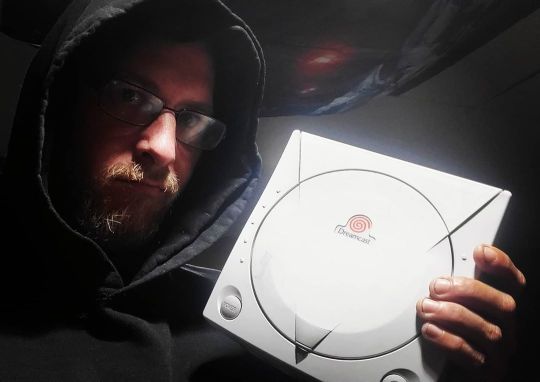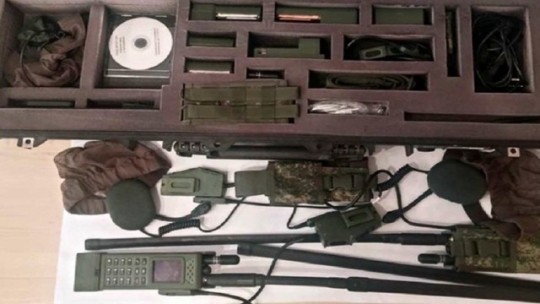#sixthgeneration
Text
US $300 Billions 6th Generation Fighter Jet Is Finally Here!
youtube
In this video, we dive deep into China's revolutionary aviation advancements as their sixth-generation stealth fighter concept takes center stage. Join us as we dissect the innovative tailless design and its potential implications for future warfare. From AI-assisted piloting to versatile combined cycle engines, we explore the features that could reshape air combat. Stay informed about the evolving landscape of military aviation.
#ChinaAviation#StealthFighter#SixthGeneration#MilitaryTechnology#TaillessDesign#AIAssistedPiloting#CombinedCycleEngines#FutureWarfare#AirCombat#MilitaryAviation#Youtube
0 notes
Photo

#Pokemon#Charizard#mega charizard#Mega Charizard X#CharizardMega#Charizard Mega#MegaX#Charizard X#Pokemon Mega#Kalos#PokemonX#Pokemon XY#XY#Gen6#Sixthgeneration#Sixthgen#Digital Illustration#digital art#mouse
10 notes
·
View notes
Photo

GST-B300-1A #casio #gshock #gsteel #watch #watchoutz #watchoutzhk #watchuseek #gst #blackdial #bluetooth #solar #solarpower #toughsolar #resinstrap #largersize #6thgeneration #sixthgeneration #digitalwatch #analogwatch #smartphonelink #multifunction #tattoo #blackbezel #whiteled #blackstrap #texturedstrap #gstb300 #gstb3001a (at Watch Outz 注目時計) https://www.instagram.com/p/CGmiOX4nmpt/?igshid=1u2n86m0k5ppc
#casio#gshock#gsteel#watch#watchoutz#watchoutzhk#watchuseek#gst#blackdial#bluetooth#solar#solarpower#toughsolar#resinstrap#largersize#6thgeneration#sixthgeneration#digitalwatch#analogwatch#smartphonelink#multifunction#tattoo#blackbezel#whiteled#blackstrap#texturedstrap#gstb300#gstb3001a
2 notes
·
View notes
Photo

Dreamcast 🌀🕹️ 🎮 🎮 🎮 🎮 🎮 🎮 #timehop #abethedino #sega #segadreamcast #segadreamcast🌀 #dreamcast #northamerica #northamerican #release #sixthgeneration #homevideo #gameconsole #bestsellinggame #sonicadventure https://www.instagram.com/p/CToG3TXrUAC/?utm_medium=tumblr
#timehop#abethedino#sega#segadreamcast#segadreamcast🌀#dreamcast#northamerica#northamerican#release#sixthgeneration#homevideo#gameconsole#bestsellinggame#sonicadventure
0 notes
Photo

Another one added to the family... #sega #segadreamcast #retro #retrogaming #retrostreamer #twitch #twitchstreamers #twitchaffiliate #twitchretro #classicgaming #sixthgeneration https://www.instagram.com/p/CBcmyvdjwP5/?igshid=1ihhof3xeikp4
#sega#segadreamcast#retro#retrogaming#retrostreamer#twitch#twitchstreamers#twitchaffiliate#twitchretro#classicgaming#sixthgeneration
0 notes
Photo

The sixth generation Honda Civic EK. #ek #civicek4 #civicek #civic #hondanation #honda #powerofdreams #jdm #japancars #jdmculture #sixthgeneration #superstreetonline #9tro #hondatuning #streetdriven #allstock #lessismore #90slegends #90scars #joyofmachine #speedhunters https://www.instagram.com/p/B8qMIzhB3iC/?igshid=5p5lsjeywj8u
#ek#civicek4#civicek#civic#hondanation#honda#powerofdreams#jdm#japancars#jdmculture#sixthgeneration#superstreetonline#9tro#hondatuning#streetdriven#allstock#lessismore#90slegends#90scars#joyofmachine#speedhunters
0 notes
Photo

Russian soldiers provide a sixth-generation radio transmitter Members of the 49th Infantry Division of the Southern Military Zone received more than 30 radio stations from the sixth generation Wireless Azart.
0 notes
Text
America is developing a new sixth-generation fighter
[ad_1]
The United States is developing a sixth-generation fighter that will replace the main fighters in its air fleet, the site said.
The data indicates that America will need 414 modern fighters of the sixth generation at least, to replace the fighter jets "F-15" and "F-22" in the Air fleet, and is expected to cost one plane to 300 million dollars.
The United States will…
View On WordPress
0 notes
Photo

Aww! Tita @pattyfabiana and Gummy Joyce @jodida63 send the best care packages. #sanfrancisco #sfnative #sfbornandraised #californiagrown #repyocity #toomeyboys #allborninSFca #sixthgeneration #fromthe415 #withlove #allday #cuzallofmelovesallofyou #allthehearteyes #thanksguys #loveyou (at Toomey Casa)
#loveyou#allday#sfbornandraised#fromthe415#sixthgeneration#repyocity#withlove#sanfrancisco#toomeyboys#allborninsfca#allthehearteyes#thanksguys#cuzallofmelovesallofyou#sfnative#californiagrown
0 notes
Photo

Nice meeting you sir! 😄😄😄 #subicautoshow #civic #sir #sixthgeneration #sedan #spoonsports #jdm🔰
0 notes
Text
🔜Coming soon. Stay tuned!↩️
🔜Próximamente. ¡Quédate sintonizado!↩️
#CityMotorsPowderCoatingsPainting #Hayward
#SanLeandro #Fremont #SanLorenzo #5Point0 #Milpitas #ElSobrante
#CastroValley #Oakland #Alameda #V8 #Emeryville #Berkeley #Rodeo #GT #UnionCity #Crokett #Newark #ElCerrito #Coupe #Richmond #EastBay #Mustang #StayHumble #SixthGeneration #VMFDigitalMarketingAgency
0 notes
Photo

GWF-D1035B-1 #casio #gshock #watch #watchoutz #watchoutzhk #watchuseek #specialedition #35thanniversary #thirtyfifthanniversary #frogman #6thgeneration #sixthgeneration #triplesensor #doublelayer #saphireglass #carbonfiber #goldessence #diverswatch #tattoo #rare #hardtofind #discontinued (at Watch Outz 注目時計) https://www.instagram.com/p/BuA77mwnSSh/?utm_source=ig_tumblr_share&igshid=13xnqluikqupe
#casio#gshock#watch#watchoutz#watchoutzhk#watchuseek#specialedition#35thanniversary#thirtyfifthanniversary#frogman#6thgeneration#sixthgeneration#triplesensor#doublelayer#saphireglass#carbonfiber#goldessence#diverswatch#tattoo#rare#hardtofind#discontinued
2 notes
·
View notes
Text
Samsung Display is reducing plastic by focusing on OLED

Samsung Display Our research correspondent has attended MWC Barcelona both in 2018, 2019, 2022 and 2023. One of the companies made him impressive was Samsung Display. Samsung Display is a […]
9 notes
·
View notes
Text
The haunting seems of the Oud dates back to 5000 a long time in the past and when played by King David and is nonetheless getting played today. The Oud instrument is the king of the Arabic audio instruments
Oud
According to El-Farabie, the Oud dates back again to the days of Lamech a sixthgeneration
descendant of Adam. Lamech was identified as the “Father of the Oud
players”. The initial appearance of the Oud was 3000 BC. The desecrated
skeleton proposed the kind of the Oud. Oud is acknowledged as the 1st stringed
instrument in heritage.
The oldest pictorial report of the Oud dates again to the Uruk period of time in Southern
Mesopotamia (Iraq), above 5000 several years in the past on a cylinder seal obtained by Dr.
Dominique Collon and the seal is at the moment housed at the British Museum..
As the Oud becomes the quintessence of before chordophones, it also
constitutes their practical synthesis. In the ninth century, Miwardi, the jurist of
Baghdad, extolled its use in treating disease, this kind of as King David did by means of his
lifestyle with his Oud. The Oud was in the hands of Egyptians and Iraqis when the
Israelites came out of Egypt. They took the Oud with them to the Holy Land. The
Oud nevertheless maintains its Egyptian and Iraqi attributes and musical stylings. The Oud
was played in sacred locations these kinds of as the temples of Egypt.
In the very first centuries of Arabian civilization, the oud had four courses (a single
string for each training course – double-strings came later on) only, tuned in successive
fourths. These had been referred to as (for the least expensive in pitch) the Bamm, then came
(larger to maximum in pitch) the Mathnā, the Mathlath and the Zīr. A fifth
string (greatest in pitch, most affordable in its positioning in relation to other strings),
named ḥād ("sharp"), was sometimes extra for theoretical reasons,
normally to complement the double octave.
The neck, joined to the human body, is explained as 'unq ('neck') in classical writings
and the raqba ('neck') or zand ('wrist') nowadays. It extends the upper component of the
instrument by some twenty cm and is inserted into the soundbox up to the
soundhole. This length, which has been considerably discussed, is essential in the
instrument's construction, deciding the variety and location of the intervals
and thus impacting the modes. In early 19th-century Egypt, Villoteau gave the
measurement as 22.4 cm a century later on, also in Egypt, Kamil al-Khula'i gave it
as 19.5 cm. In modern day Egypt, the size of the neck might range amongst eighteen
and twenty.five can. It is standardized as twenty cm in Syria, but a length of 24.5 cm may
be found on Moroccan versions, he 'ud 'arbi (Arab 'ud). If the 'ud 'arbi is the
descendant of an archaic model of Andalusian provenance, the higher component of the
instrument might have turn into shorter. The neck not often has
4. Versions of the 'ud
(i) Two-string 'ud:The thesis of its existence has been upheld by musicologists
from Europe and Iran it envisages the archaic 'ud as a counterpart of the tanbur,
obtaining two strings like that instrument. The argument rests on the names of the
strings, two of which are Iranian terms (bamm and zir) and two others of Arab
origin (mathna and mathlath). There is no circumstantial documentary evidence
to help this hypothesis.
(ii) 4-system 'ud: The Arabian 'ud qadim (historical lute), in certain, invited
cosmological speculation, linking the strings with the humours, the temperature,
the elements, the seasons, the cardinal points, the zodiac and the stars. The
strings might be tuned bass to treble or treble to bass. Bass to treble tuning is
represented by al-Kindi (ninth century), who advocated tuning the least expensive training course
(bamm or first string) to the lowest singable pitch. Placing the ring finger on a
mathematically determined length of this string, a single moves on to deduce the
pitch of the 3rd open up training course (mathna), then that of the next (mathlath) and
lastly the fourth (zir). (This method is also used to the five-system 'ud and is
even now employed as a tuning strategy, following the sequence one-four-2-three-5 or one-four-two-5-three.)
Adherents of the reverse college (Ikhwan al- Safa') tune from treble to bass. The
intention, inherited in portion by the Turkish 'ud, involves pulling tough on the zir (higher)
string, so that as it ways breaking-stage it presents a clear seem. A single then
moves on to decide the pitch of the next program (mathna), the 3rd
(mathlath) and lastly the fourth (bamm). These two colleges did not continue to be
fully individual. But whichever method is utilized, equally stop up with tuning by
successive 4ths, each and every course currently being tuned a 4th over the lower program
previous it. Musicologists, Japanese as well as Western, who consider to interpret the
pitch of these notes in European phrases end up with diverse final results.
Although the four-training course 'ud survives in Morocco, as the 'ud 'arbi, the tuning
does not conform to the pitches inferred from classical treatises: a conflict
among oral and composed traditions. The Moroccan approach looks to be the
solution of a preceding program, the 'ud
five
ramal, which also comprised a sequence of 4ths: ramal (?e), hsin, (?a), maya (?
d'), raghul (?g'). This 'ud, like its Tunisian counterpart, may possibly be variously tuned: a
attribute of these tunings is that they juxtapose the classic 4ths with the octave
and often the 5th and sixth (D-d- G-c). The strings of the 'ud 'arbi are named
dhil, ramal, maya, hsin this terminology by no signifies refers to a fixed pitch
common this kind of as educational and standardized tuition approaches would would like for.
At the time of al-Kindi, two of the programs were made of gut and two of silk. In the
tenth century silk turned predominant and some texts give the composition of
the twisted threads: bamm = 64 threads, mathlath = 48, mathna = 36, zir = 27.
The figures for the lower programs of the 'ud correspond with those of two upper
strings of the Chinese qin, a simple fact that has led to speculation about the
romantic relationship in between Arab and Chinese civilizations by way of the Silk Route.
Yet another characteristic of the 4-course 'ud is that it is bichordal, possessing double
courses. thirteenth-century iconography displays that it was already normal to pair the
strings at that time, possibly to enhance sonority but also to permit the
improvement of a far more virtuoso sort of overall performance.
(iii) Five-program 'ud: The addition in Andalusia of a fifth training course has been
attributed to Ziryab (8th-ninth century), though in theoretical writings it appeared
in Iraq with al-Kindi. (The addition of this extra system has a parallel in China.)
With Ziryab the fifth course, acknowledged as awsat ('intermediary'), a time period perpetuated
in the 'ud of San'a' known as qanbus, is put between the next (mathna) and
third (mathlath) programs. With al-Kindi and his successors, it was to attain the
stop of the instrument and turn out to be the string called hadd ('high') or the 2nd
zir. (In accordance to oral tradition, to receive an octave on the extended-necked lute
baglama, a reduced string need to be placed in the center. This is carried out when the neck
has few frets.) As the historic 'ud did not have a two-octave compass, the
physical appearance of the fifth string corresponded to the calls for of a new system.
The four-training course 'ud had no need to run correct through the octave. Its repertory
was carried out on a tetrachord or pentachord, transposable an octave larger.
With the five-course product, the heptatonic system imposed total series of
octaves. The new lute was referred to as 'ud kamil ('perfect 'ud').
The 5-system 'ud is the most widespread and most well-known product amid
performers. It has also been named the 'ud misri (Egyptian) due to the fact of the finely
created instruments produced by the lute makers of Egypt, who export them
as significantly as Zanzibar. The individuals of North Africa have included the dialectal name of
m'sharqi or mashriqi ('of the east'). The technique of tuning it, extremely adaptable in
the nineteenth century, is now getting to be stabilized. These modifications are owing partly
to the crack-up of the Ottoman Empire, which has induced a rupture between
Turkish and Arab cultures, and partly to the proliferation of educating approaches
endeavouring to impose a solitary type of tuning, working from low to substantial: yaka =
G 'ushayran = A duka = d nawa = g kardan = c'. Nonetheless, there are variants
reintroducing tuning by 4ths. Thus what is explained as 'Aleppo tuning' consists
of: qarar busalik = E 'ushayran A duka =d nawa = g kardan = c'. This latter
composition is utilised in Turkey and Iraq. To reply the sensible specifications of
present-working day notation, a treble clef adopted by the figure eight is utilized. This
procedure has been considerably criticized by those in favour of employing the bass clef. The
tuning of the Turkish lute faithfully reflects the Arab type but in reverse, looking through in
descending order: gerdaniye = g' neva = d' dugah = a asiran = e kaba dugah =
d (this final, a lot more mobile pitch may similarly settle on G. This outdated tuning
represents the 'old school' (eski akort), and has now been replaced by an
ascending tuning - the 'new school' (yeni akort): A-B-e-a-d'-g'. However it is now
considered incorrect in the Syro-Egyptian spot, and agent of the aged
Ottoman faculty, a tuning method in ascending buy survives in Iraq. It is made up
of: yaka = d 'ushayran = e duka = a nawa = d' kurdan = g'. The compass of the
bichordal five-program 'ud is just in excess of two octaves in Turkey, it is three octaves
with the addition of a lower system. Arabian instruments can accomplish this by the
addition of a sixth training course.
(iv) Six-course 'ud: Two varieties of 6-training course 'ud exist: a single has six pairs of strings,
the other 5 pairs with an further reduced string. The very first was found by Jules
Rouanet in North Africa in direction of the end of the last century tuned inclusively it
has considering that disappeared except in Libya,
six
where it is still created but with distinct tuning. A related instrument, identified in Syria,
is tuned C- E-A-d-g-c'. The instrument with five double strings and a one lower
one, nevertheless, is turning into progressively common from Istanbul to Baghdad. It has
become widespread to place the extra string after the highest (or chanterelle).
Its pitch is at the choice of the player no rule is laid down. The presence of the
extra string endows the instrument with a broader range and improved ease of
enjoying, permitting the performer to operate very easily by means of three octaves. The
sixth program is also coming to be employed as an intermittent drone, a new
phenomenon.
(v) Seven-program 'ud: 7-system types, based on a sophisticated system of
tuning, had been identified in Egypt and Lebanon in the 19th century but have not been
observed because 1900. There is 1 exception: the Tunisian, Fawzl Sayib, is a living
learn of the 7-system instrument in the six pairs and 1 minimal arrangement.
A characteristic of this 'ud was that it reversed the arrangement of strings, positioning first
the higher and then the minimal strings on the neck from remaining to appropriate. In accordance to
Mikha'il Mushaqa (1800-88), only four of the 7 programs had been played, the
lowest course (jaharka) and the two maximum (busalik and nihuft) getting unused in
performance.
The University of Oud On-line, is a system constructed to educate the Oud by means of Skype by the
migrant Oud learn Ramy Adly, an Egyptian well-known Oud Participant, Ramy Adly is a
youthful learn of the oud, the functional lute-like instrument that shaped Arab
classical songs. Grounded in the principal Arab classical styles many thanks to arduous
coaching in his indigenous Egypt, Adly has branched out repeatedly, incorporating jazz
idioms and embracing discussions with other musicians about the planet.
Adly has carried out all around the Center East, Europe, and North The united states. He has
composed songs for theater and movie, and gathered a big number of students
all around the planet, by way of an revolutionary on-line curriculum he created, named The
University of Oud Online. His delicate, sturdy enjoying has been read from the
Library at Alexandria to American cathedrals and schools.
Now dependent in Washington, DC, Adly proceeds to broaden the choices of his
instrument. “I want to deliver the oud to the identical level as the guitar culturally, the
instrument that is almost everywhere and can do every little thing,” he exclaims.
For Adly, the oud has usually been like a member of the household. Almost every person
in his loved ones played the oud when he was growing up in Cairo, like uncles,
siblings, and his beloved grandfather, who gave him his 1st introduction to the
intricate, evocative instrument. “I grew up listening to the oud,” he recalls.
Listening is 1 factor, and mastering the instrument one more. Adly plunged into
his review of this age-outdated instrument at the Arab Oud Home, with Iraqi oud
virtuoso Naseer Shamma. Adly located himself working towards for a dozen hours a day,
and loving it. “It was a great deal like the system Paganini proven for his students,”
Adly points out. “You have to go by means of the fire to be qualified as a performer and
composer. I graduated as the two composer and soloist.”
0 notes
Photo

GWF-D1035B-1 #casio #gshock #watch #watchoutz #watchoutzhk #watchuseek #specialedition #35thanniversary #thirtyfifthanniversary #frogman #6thgeneration #sixthgeneration #triplesensor #doublelayer #saphireglass #carbonfiber #goldessence #diverswatch (at Watch Outz 注目時計)
#watchuseek#diverswatch#saphireglass#carbonfiber#casio#gshock#triplesensor#watchoutzhk#frogman#thirtyfifthanniversary#sixthgeneration#doublelayer#goldessence#35thanniversary#watchoutz#6thgeneration#watch#specialedition
0 notes
Text
The haunting seems of the Oud dates back again to 5000 years ago and after performed by King David and is nonetheless becoming performed today. The Oud instrument is the king of the Arabic audio instruments
Oud Lessons
In accordance to El-Farabie, the Oud dates again to the times of Lamech a sixthgeneration
descendant of Adam. Lamech was recognized as the “Father of the Oud
players”. The 1st physical appearance of the Oud was 3000 BC. The desecrated
skeleton proposed the sort of the Oud. Oud is identified as the very first stringed
instrument in history.
The oldest pictorial record of the Oud dates back again to the Uruk time period in Southern
Mesopotamia (Iraq), over 5000 years in the past on a cylinder seal acquired by Dr.
Dominique Collon and the seal is at the moment housed at the British Museum..
As the Oud gets the quintessence of before chordophones, it also
constitutes their purposeful synthesis. In the ninth century, Miwardi, the jurist of
Baghdad, extolled its use in treating sickness, this kind of as King David did by way of his
existence with his Oud. The Oud was in the hands of Egyptians and Iraqis when the
Israelites arrived out of Egypt. They took the Oud with them to the Holy Land. The
Oud nevertheless maintains its Egyptian and Iraqi attributes and musical stylings. The Oud
was performed in sacred places these kinds of as the temples of Egypt.
In the first centuries of Arabian civilization, the oud had four programs (one
string for every system – double-strings came later on) only, tuned in successive
fourths. These ended up referred to as (for the cheapest in pitch) the Bamm, then came
(greater to highest in pitch) the Mathnā, the Mathlath and the Zīr. A fifth
string (highest in pitch, most affordable in its positioning in relation to other strings),
referred to as ḥād ("sharp"), was often extra for theoretical functions,
typically to complement the double octave.
The neck, joined to the human body, is explained as 'unq ('neck') in classical writings
and the raqba ('neck') or zand ('wrist') today. It extends the higher part of the
instrument by some 20 cm and is inserted into the soundbox up to the
soundhole. This length, which has been considerably mentioned, is essential in the
instrument's building, deciding the number and spot of the intervals
and thus influencing the modes. In early nineteenth-century Egypt, Villoteau gave the
measurement as 22.four cm a century later, also in Egypt, Kamil al-Khula'i gave it
as 19.five cm. In up to date Egypt, the length of the neck might vary among 18
and 20.5 can. It is standardized as twenty cm in Syria, but a length of 24.five cm could
be discovered on Moroccan models, he 'ud 'arbi (Arab 'ud). If the 'ud 'arbi is the
descendant of an archaic model of Andalusian provenance, the upper component of the
instrument might have turn out to be shorter. The neck not often has
4. Designs of the 'ud
(i) Two-string 'ud:The thesis of its existence has been upheld by musicologists
from Europe and Iran it envisages the archaic 'ud as a counterpart of the tanbur,
having two strings like that instrument. The argument rests on the names of the
strings, two of which are Iranian phrases (bamm and zir) and two other folks of Arab
origin (mathna and mathlath). There is no circumstantial documentary proof
to assistance this hypothesis.
(ii) Four-system 'ud: The Arabian 'ud qadim (ancient lute), in certain, invited
cosmological speculation, linking the strings with the humours, the temperature,
the components, the seasons, the cardinal factors, the zodiac and the stars. The
strings may possibly be tuned bass to treble or treble to bass. Bass to treble tuning is
represented by al-Kindi (ninth century), who advocated tuning the cheapest course
(bamm or 1st string) to the least expensive singable pitch. Positioning the ring finger on a
mathematically established length of this string, one moves on to deduce the
pitch of the 3rd open system (mathna), then that of the next (mathlath) and
lastly the fourth (zir). (This technique is also used to the five-program 'ud and is
nevertheless utilized as a tuning strategy, pursuing the sequence one-four-two-three-5 or one-four-2-five-3.)
Adherents of the opposite school (Ikhwan al- Safa') tune from treble to bass. The
intention, inherited in component by the Turkish 'ud, involves pulling challenging on the zir (large)
string, so that as it methods breaking-position it gives a clear audio. One particular then
moves on to figure out the pitch of the 2nd system (mathna), the third
(mathlath) and lastly the fourth (bamm). These two faculties did not remain
entirely different. But whichever treatment is employed, the two end up with tuning by
successive 4ths, every course being tuned a 4th previously mentioned the reduce course
previous it. Musicologists, Japanese as nicely as Western, who attempt to interpret the
pitch of these notes in European phrases end up with different final results.
Even though the four-training course 'ud survives in Morocco, as the 'ud 'arbi, the tuning
does not conform to the pitches inferred from classical treatises: a conflict
among oral and created traditions. The Moroccan strategy seems to be the
solution of a prior system, the 'ud
5
ramal, which also comprised a sequence of 4ths: ramal (?e), hsin, (?a), maya (?
d'), raghul (?g'). This 'ud, like its Tunisian counterpart, may be variously tuned: a
characteristic of these tunings is that they juxtapose the classic 4ths with the octave
and sometimes the fifth and sixth (D-d- G-c). The strings of the 'ud 'arbi are named
dhil, ramal, maya, hsin this terminology by no means refers to a fastened pitch
common these kinds of as educational and standardized tuition methods would wish for.
At the time of al-Kindi, two of the programs have been produced of gut and two of silk. In the
10th century silk grew to become predominant and some texts give the composition of
the twisted threads: bamm = sixty four threads, mathlath = forty eight, mathna = 36, zir = 27.
The figures for the reduce programs of the 'ud correspond with those of two upper
strings of the Chinese qin, a truth that has led to speculation about the
romantic relationship among Arab and Chinese civilizations by way of the Silk Route.
One more attribute of the four-course 'ud is that it is bichordal, obtaining double
courses. 13th-century iconography demonstrates that it was currently typical to pair the
strings at that time, most likely to increase sonority but also to enable the
improvement of a a lot more virtuoso kind of efficiency.
(iii) 5-system 'ud: The addition in Andalusia of a fifth system has been
attributed to Ziryab (eighth-ninth century), though in theoretical writings it appeared
in Iraq with al-Kindi. (The addition of this further course has a parallel in China.)
With Ziryab the fifth training course, identified as awsat ('intermediary'), a term perpetuated
in the 'ud of San'a' named qanbus, is put among the second (mathna) and
third (mathlath) classes. With al-Kindi and his successors, it was to reach the
end of the instrument and become the string referred to as hadd ('high') or the second
zir. (According to oral custom, to acquire an octave on the lengthy-necked lute
baglama, a lower string need to be put in the middle. This is done when the neck
has number of frets.) As the ancient 'ud did not have a two-octave compass, the
physical appearance of the fifth string corresponded to the requires of a new system.
The four-system 'ud had no need to operate correct by means of the octave. Its repertory
was performed on a tetrachord or pentachord, transposable an octave greater.
With the five-training course product, the heptatonic technique imposed complete series of
octaves. The new lute was called 'ud kamil ('perfect 'ud').
The five-course 'ud is the most typical and most common product amongst
performers. It has also been named the 'ud misri (Egyptian) since of the finely
made devices created by the lute makers of Egypt, who export them
as much as Zanzibar. The individuals of North Africa have added the dialectal name of
m'sharqi or mashriqi ('of the east'). The strategy of tuning it, really flexible in
the nineteenth century, is now turning into stabilized. These modifications are owing partly
to the break-up of the Ottoman Empire, which has caused a rupture among
Turkish and Arab cultures, and partly to the proliferation of instructing strategies
endeavouring to impose a solitary sort of tuning, working from lower to high: yaka =
G 'ushayran = A duka = d nawa = g kardan = c'. Nonetheless, there are variants
reintroducing tuning by 4ths. Hence what is explained as 'Aleppo tuning' consists
of: qarar busalik = E 'ushayran A duka =d nawa = g kardan = c'. This latter
construction is used in Turkey and Iraq. To solution the useful needs of
present-day notation, a treble clef followed by the determine eight is utilized. This
procedure has been a lot criticized by people in favour of using the bass clef. The
tuning of the Turkish lute faithfully demonstrates the Arab kind but in reverse, reading in
descending get: gerdaniye = g' neva = d' dugah = a asiran = e kaba dugah =
d (this previous, a lot more cellular pitch may possibly equally settle upon G. This outdated tuning
represents the 'old school' (eski akort), and has now been changed by an
ascending tuning - the 'new school' (yeni akort): A-B-e-a-d'-g'. However it is now
considered incorrect in the Syro-Egyptian region, and agent of the old
Ottoman faculty, a tuning method in ascending order survives in Iraq. It consists
of: yaka = d 'ushayran = e duka = a nawa = d' kurdan = g'. The compass of the
bichordal 5-program 'ud is just more than two octaves in Turkey, it is three octaves
with the addition of a reduced system. Arabian instruments can achieve this by the
addition of a sixth training course.
(iv) Six-program 'ud: Two sorts of six-system 'ud exist: 1 has 6 pairs of strings,
the other 5 pairs with an additional low string. The first was located by Jules
Rouanet in North Africa towards the finish of the very last century tuned inclusively it
has since disappeared besides in Libya,
six
exactly where it is even now created but with different tuning. A related instrument, discovered in Syria,
is tuned C- E-A-d-g-c'. The instrument with five double strings and a one lower
1, nonetheless, is turning into ever more normal from Istanbul to Baghdad. It has
turn into typical to place the further string soon after the optimum (or chanterelle).
Its pitch is at the decision of the participant no rule is laid down. The presence of the
added string endows the instrument with a wider variety and enhanced ease of
actively playing, permitting the performer to run simply by way of three octaves. The
sixth training course is also coming to be employed as an intermittent drone, a new
phenomenon.
(v) 7-program 'ud: Seven-training course models, primarily based on a sophisticated technique of
tuning, have been identified in Egypt and Lebanon in the nineteenth century but have not been
observed considering that 1900. There is 1 exception: the Tunisian, Fawzl Sayib, is a residing
master of the 7-system instrument in the six pairs and a single reduced arrangement.
A attribute of this 'ud was that it reversed the arrangement of strings, putting very first
the substantial and then the minimal strings on the neck from left to right. In accordance to
Mikha'il Mushaqa (1800-88), only 4 of the seven courses had been performed, the
lowest training course (jaharka) and the two optimum (busalik and nihuft) getting unused in
efficiency.
The Faculty of Oud On-line, is a platform built to teach the Oud via Skype by the
migrant Oud grasp Ramy Adly, an Egyptian renowned Oud Player, Ramy Adly is a
younger master of the oud, the versatile lute-like instrument that formed Arab
classical tunes. Grounded in the major Arab classical designs thanks to demanding
training in his native Egypt, Adly has branched out regularly, incorporating jazz
idioms and embracing conversations with other musicians around the globe.
Adly has carried out all around the Middle East, Europe, and North The us. He has
composed audio for theater and movie, and collected a large amount of learners
all around the planet, by means of an revolutionary online curriculum he designed, referred to as The
College of Oud On-line. His sensitive, sturdy taking part in has been listened to from the
Library at Alexandria to American cathedrals and educational institutions.
Now based in Washington, DC, Adly proceeds to increase the possibilities of his
instrument. “I want to provide the oud to the identical degree as the guitar culturally, the
instrument that is just about everywhere and can do every little thing,” he exclaims.
For Adly, the oud has constantly been like a member of the loved ones. Virtually everybody
in his loved ones played the oud when he was expanding up in Cairo, including uncles,
siblings, and his beloved grandfather, who gave him his first introduction to the
complex, evocative instrument. “I grew up listening to the oud,” he recalls.
Listening is one issue, and mastering the instrument yet another. Adly plunged into
his research of this age-old instrument at the Arab Oud Home, with Iraqi oud
virtuoso Naseer Shamma. Adly located himself training for a dozen hrs a working day,
and loving it. “It was a lot like the method Paganini proven for his college students,”
Adly points out. “You have to go by means of the fireplace to be skilled as a performer and
composer. I graduated as the two composer and soloist.”
0 notes
Photo

#molossus #sixthgeneration #batman #dc one down, 6 to go
0 notes
Text
youtube
Watch the American Climate Leadership Awards 2024 now: https://youtu.be/bWiW4Rp8vF0?feature=shared
The American Climate Leadership Awards 2024 broadcast recording is now available on ecoAmerica's YouTube channel for viewers to be inspired by active climate leaders. Watch to find out which finalist received the $50,000 grand prize! Hosted by Vanessa Hauc and featuring Bill McKibben and Katharine Hayhoe!
#ACLA24#ACLA24Leaders#youtube#youtube video#climate leaders#climate solutions#climate action#climate and environment#climate#climate change#climate and health#climate blog#climate justice#climate news#weather and climate#environmental news#environment#environmental awareness#environment and health#environmental#environmental issues#environmental justice#environment protection#environmental health#Youtube
16K notes
·
View notes